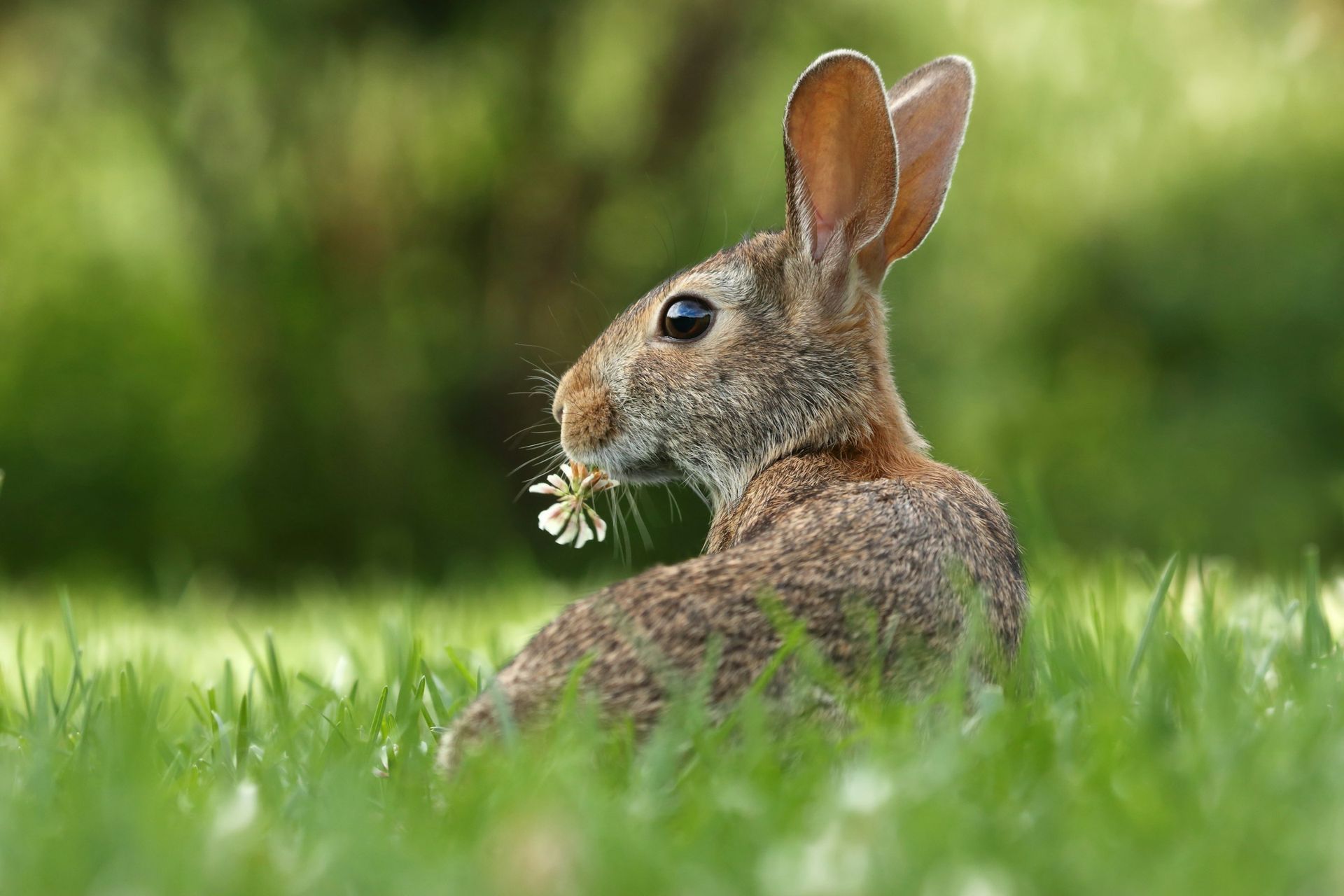Rabbits are small, herbivorous mammals known for their long ears, powerful hind legs, and remarkable agility. Found in a variety of habitats, including meadows, forests, and deserts, rabbits thrive in both wild and urban environments. They play a critical role in ecosystems by promoting plant growth through seed dispersal and serving as a vital food source for many predators.
Rabbits typically measure 12-20 inches in length and weigh between 2-4 pounds, depending on the species. Their soft fur varies in color from brown and gray to white and black, providing excellent camouflage. Common species include Brush Rabbit, Eastern Cottontail and Desert Cottontail. Rabbits feed primarily on grasses, clover, and leafy plants.
Rabbits are crepuscular, meaning they are most active at dawn and dusk. They build burrows, known as warrens, which provide shelter from predators and harsh weather. Breeding occurs throughout much of the year, with females giving birth to litters of 4-8 kits. Young rabbits grow quickly and are independent within a few weeks.
Natural predators include foxes, hawks, owls, and snakes. Human-related threats such as habitat loss, vehicle collisions, and domestic pets also impact rabbit populations. Despite these challenges, rabbits are highly adaptable and have established stable populations in many areas.

For your safety and the well-being of wildlife, please observe animals from a distance and avoid touching or disturbing them. If you encounter an animal that appears injured or in distress, contact a licensed wildlife rescue organization for guidance before intervening.
Found An Animal? Not sure how to help a wild animal in need? Learn when to step in, who to call, and how to help safely.
Did You Know?
- Rabbits have nearly 360-degree vision, allowing them to detect predators from almost any angle.
- They can run up to 35 miles per hour to evade predators.
- Rabbits communicate through a variety of sounds, including thumps, grunts, and squeals.
- Their teeth never stop growing, which is why they are constantly chewing on plants to keep them worn down.
- Some rabbits thump their hind legs to warn others of nearby danger.
- A rabbit’s ears help regulate its body temperature by releasing excess heat.
- Rabbits are known for their high reproductive rate, with females capable of producing multiple litters in a single year.
- Baby rabbits, called kits, are born blind and hairless but grow rapidly.
- Rabbits perform a joyful leap and twist in mid-air, known as a “binky,” when they are happy.
- More than half the world’s population of rabbits live in North America.
- Desert cottontails have a white tail that acts as a signal when raised in the air, so other bunnies know when danger is nearby. They might be small, but they can still reach speeds of 20-30 miles per hour!
Problems Faced In The Wild
- Habitat Loss: Urban development reduces the availability of natural shelter and food sources.
- Vehicle Collisions: Rabbits are often struck by cars when crossing roads.
- Predation: Domestic pets and natural predators pose a significant threat to rabbit populations.
- Disease: Rabbits are susceptible to diseases such as tularemia and myxomatosis.
- Climate Change: Altered weather patterns affect food availability and habitat conditions.
- Human-Wildlife Conflict: Rabbits are sometimes viewed as pests in gardens and agricultural areas.
Tips For Cohabitation
- Preserve Natural Vegetation: Maintain native plants to provide food and shelter for rabbits.
- Install Rabbit Fencing: Protect gardens and crops with secure fencing.
- Avoid Pesticides: Use natural pest control methods to ensure a safe environment.
- Keep Pets Supervised: Reduce the risk of predation by keeping pets under control.
- Provide Brush Piles: Create natural shelters for rabbits in your yard.
- Educate Others: Share the ecological importance of rabbits in supporting biodiversity.



